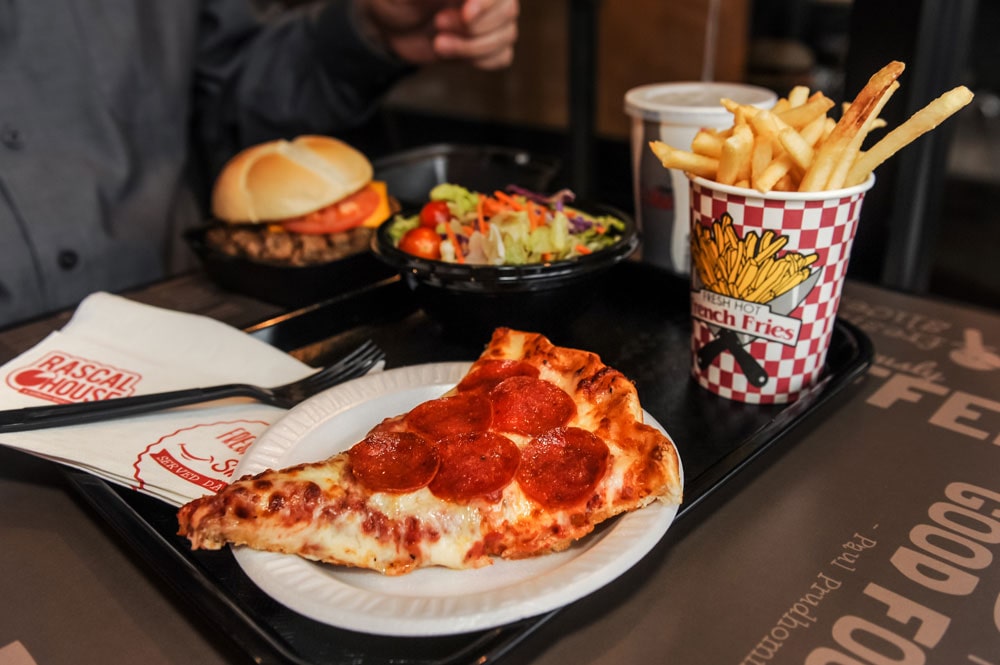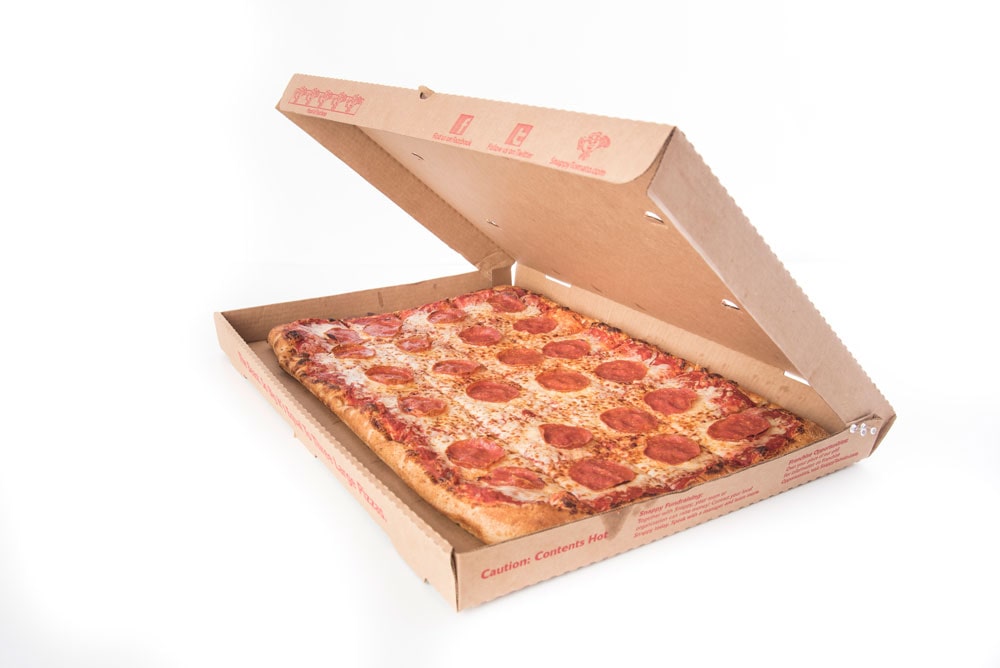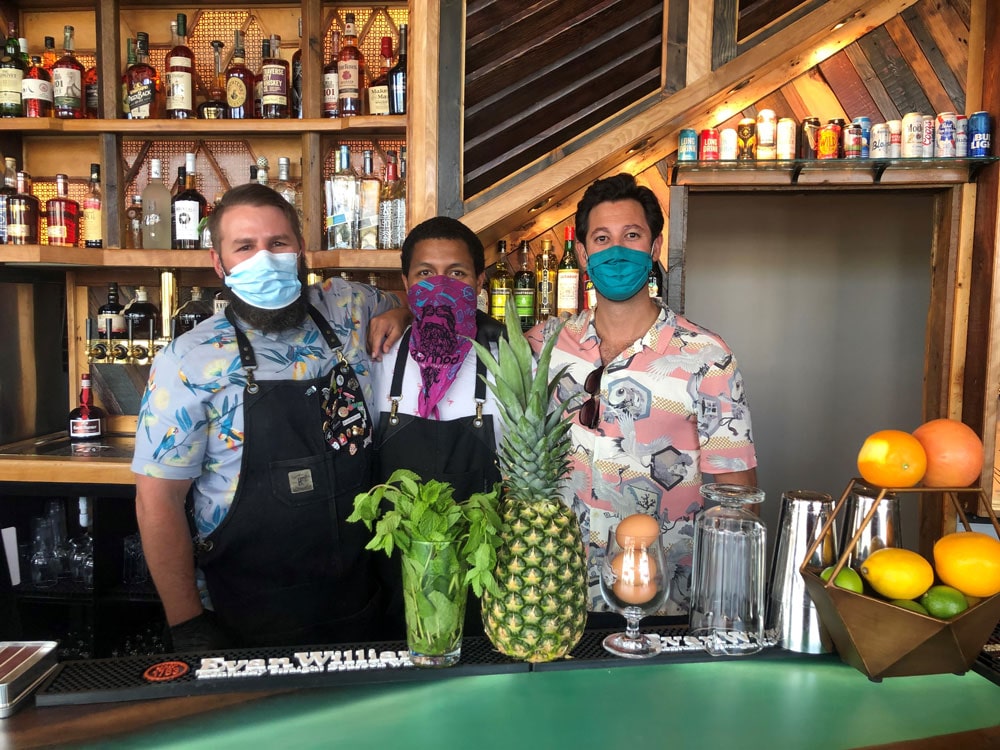By Rick Hynum
There hasn’t been enough good news for most pizzeria owners since the pandemic struck, but a Culinary Visions survey released in August offered one encouraging note: While customers have adapted to the “new normal” of delivery and carryout, they miss the dine-in experience more than ever and long for its return. The survey found that 77% of respondents look forward to dining out again and “have a greater appreciation for all of the restaurant experiences they used to take for granted.” A similar number said they view chefs as heroes in their communities, and 78% said they plan to patronize restaurants known for taking care of their employees during the pandemic.
“Consumers are relying on food from their favorite local spots, and they understand the obstacles restaurants face while serving their community during a pandemic,” says Sharon Olson, executive director of Chicago-based Culinary Visions. “Diners have a lot of gratitude for the chefs, waitstaff and restaurants that have become pillars in the community during these difficult times, and they want to support them as much as they can.”
How to thrive in a pandemic: Dawn Gribble of Virtual Solutions offers tips for restaurant success
Unfortunately, over the short term, discretionary spending will likely remain limited for many customers who have either lost their jobs or worry about ending up on the unemployment line. Recessions don’t last forever, but operators have to find ways to keep their doors open long enough to reap the benefits when the economy rebounds. And that means remaining flexible and innovative while sticking with the methods that have proven to work thus far, such as low-touch or zero-contact delivery, carryout and curbside pickup.
But you already know that. We asked several pizzeria operators and restaurant consultants to dig a little deeper and share additional insights and strategies for boosting profitability, cutting costs and making ordering your pizza as, you know, easy as pie. Here’s what they told us:
“Having cash on hand is crucial in case of a future emergency. Pizzeria owners should focus on retaining sufficient capital and liquidity in the business to prepare for a potential second wave of shutdowns.”
— Mark Wasilefsky, TD Bank’s Restaurant Franchise Finance Group
 Mark Wasilefsky
Mark Wasilefsky
Head, TD Bank’s Restaurant Franchise Finance Group
South Glastonbury, CT
In this current economic environment, having cash on hand is crucial in case of a future emergency or unforeseen circumstance. Pizzeria owners should focus on retaining sufficient capital and liquidity in the business to prepare for a potential second wave of shutdowns and leverage government programs, such as Paycheck Protection Program loans and SBA Economic Injury Disaster Loans, as applicable.
As consumer discretionary spending continues to decrease and many consumers continue to confront financial challenges as a result of the pandemic, there will be a fixed level of providers serving a shrinking base, and pizzerias should focus on the value they can bring to the individual consumer. This can already be seen in pizzeria advertisements that focus on the per-person cost of a meal deal. It will also be critical for pizzerias to retain good managers who have deeper knowledge of the restaurant’s operations at the expense of lower-paid traditional employees, should the pizzeria need to implement additional staffing cuts.
Pizzeria owners should consider simplifying their menus as one of the easiest ways to control gross margins. They can also try to be creative with core ingredients to provide perceived variety and attract customers.
 Erik Pettersen
Erik Pettersen
Owner, Evo Italian
Tequesta, FL
I recommend taking delivery into your own hands and not relying on a third-party delivery service. If you bring this in-house, you can better ensure that the person making deliveries is healthy and dressed professionally, won’t eat your food, and will deliver your order in a timely fashion so it’s still hot. Delivery services take out a commission of each order, so it is monetarily beneficial for restaurants to make their own deliveries. Plus, your staff can earn gratuities while dining in the restaurant isn’t as popular.
Offer family-style meal deals, and if your restaurant is only open for limited hours or days of the week, make sure you are serving fresh food and that it hasn’t expired, gone stale or spoiled. Be careful not to over-order ingredients. Embrace people who bring utensils, cups and plates from home if that will make them feel more comfortable dining at your establishment.
“Delivery services take out a commission of each order, so it is monetarily beneficial for restaurants to make their own deliveries. Plus, your staff can earn gratuities while dining in the restaurant isn’t as popular.”
— Erik Pettersen, Evo Italian

When it comes to ingredients for your pizzas and other menu items, don’t let your suppliers’ problems become your problems, says Niko Frangas, president of Cleveland-based Rascal House.
 Niko Frangas
Niko Frangas
President, Rascal House
Cleveland, OH
The first mistake I’ve seen is operators who do not fight hard enough to offset supply chain disruption. I have seen brands run out of ingredients, use different cheese, change their products, etc. You have to remain crazy focused on not disrupting your customer’s experience with your brand as much as possible. Don’t settle for what your supplier’s issues are. Find a way and find the right items to fill supply gaps even if they’re short. It means a lot for your customer and your brand. Even under [difficult] circumstances, it’s critical to show up and be that reliable and consistent element for the customer.
The second mistake is a lack of properly connected marketing. In essence, some operators have been too focused on cutting costs, reducing payroll and buying cheaper supplies instead of full engagement into driving sales through awareness campaigns, marketing in the right channels for their brand, and constant messaging and communicating. Driving sales fixes a lot of other problems, especially as costs escalate. Instead of looking for ways to cut costs first, operators should try to focus on increasing sales. Marketing is crucial.
How to thrive in a pandemic: Grimaldi’s Pizzeria CEO offers survival tips for pizzeria owners

From digital marketing and customer rewards to continually improving curbside service, Snappy Tomato Pizza is staying the course—and you should, too, says marketing director Andy Ritter.
 Andy Ritter
Andy Ritter
Director of Marketing, Snappy Tomato Pizza
Burlington, KY
You should have a COVID-19 plan in place, should any team members or managers become exposed or feel ill. Don’t wait until it happens—plan ahead so you don’t have to shut your doors. You can’t do anything without your staff—they are the most important part of your operation.
Continue to improve and streamline curbside service. Add it as a service type on your online ordering platform so guests can choose the option of never leaving their vehicle. In addition, install prepaid carryout areas so guests that choose a carryout option don’t have to come in contact with team members. These are both great ways to limit contact, practice social distancing and keep areas [in the pizzeria] from becoming crowded.
Restaurant survival tips from Richard Bailey of Client by Design
Stay the course, and do not stop advertising. Use digital media. This is the time to advertise in Google Search, social media and SMS messaging. Offer random rewards and surprise loyal customers and former customers that have fallen off the radar with free pizza. Offer a dollar back on a gift card for every $10 spent. This could encourage repeat purchases. Use social media as an outlet and have your employees make video snippets thanking customers. Get your employees to share their stories and stress how important this job is to them and how much they appreciate their customers. Include a handwritten note from the manager to longtime customers who are in this fight with you.
 David Rader
David Rader
Senior Project Manager, Dyer Brown (architecture firm)
Boston, MA
The smartest moves are to extend the outdoor patio season for as long as possible and to look at optimizing takeout. There has been a trend to maximize outdoor seating, an option that makes the public feel safer these days. For cooler climates, lengthening the outdoor dining season requires investing in patio heaters to keep exterior seating areas open as long as possible. For optimizing takeout, we saw many venues adjust by offering pickup at multiple entry points or offering a dedicated waiting area for takeout customers.

Noble Pie Parlor co-owner Ryan Goldhammer (pictured with co-owner Trevor Leppek and employee Bryan Jameson) says restaurateurs should make optimal use of their staff, from running the bar to closing down at night.
 Ryan Goldhammer
Ryan Goldhammer
Co-Owner, Noble Pie Parlor
Reno, NV
One of the smartest moves a pizzeria owner can make during these difficult and uncertain times is to refocus on the three pillars of your business: food cost, labor cost and marketing. This is an excellent time to reestablish your relationship with the finer details of your business model. Call for meetings with your managers and food reps. Sharpen your pencil with your local purveyors. Get your par sheets, order guides and inventory updated and trim the fat. It is important to turn the screws of food cost, food waste, portion control and inventory that’s collecting dust on shelves.
Second, work on keeping those labor costs lowered. Analyze your sales. See if there should be an adjustment—or further adjustments—to your operating hours. With diminished sales, does the prep crew need as many workers on shift? Do you need two bartenders or only one? Lower volume and limited operations should also impact how long it takes a closing team to properly break down and clean the restaurant and bar areas. Everyone who is part of your team is part of your family. Instilling these ideals into your corporate culture are important factors when getting everyone on board with helping to streamline tasks and take care of that bottom line.
Finally, focus on marketing. Even though budgets may be stretched, there is always opportunity in chaos. Many of your competitors will be cutting their marketing budgets, operating hours and even general services. Perhaps there are opportunities to capitalize on your competition? Measure your labor analysis against your potential to corner a late-night market that you feel may be underserved. Make sure you are partnering with the right mix of third-party delivery services that maximize your reach. These services all have internal marketing programs that may work to your advantage. Adding in-house delivery options as well can make huge impacts for low overhead. Even just ramping up your general awareness via social media outlets for very little cost can be a huge ally in these trying times!
Rick Hynum is PMQ’s editor-in-chief.















